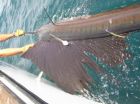New annotated database sifts through mountains of sequencing data to find gene promoters
When the best therapies fail, drug combos offer new hope
2010-12-23
(Press-News.org) Researchers at The Wistar Institute announce the release of an online tool that will help scientists find "gene promoters"—regions along a DNA strand that tell a cell's transcription machinery where to start reading in order to create a particular protein. The Mammalian Promoter Database (MPromDb) integrates the genome sequencing data generated at Wistar with publicly available data on human and mouse genomics. MPromDb pinpoints known promoters and predicts where new ones are likely to be found, the researchers say.
"Several complete genome sequences are available, including highly accurate assembled sequences from more than 1,000 individuals from the '1000 Genome Project,' with the goal of providing a comprehensive resource on human genetic variation and guiding us into the personal genomics era," said Ramana V. Davuluri, Ph.D., associate professor in Wistar's Molecular and Cellular Oncogenesis Program and associate director of The Wistar Institute Center for Systems and Computational Biology. "With this information, researchers can design personalized diagnostics and therapeutics or delve deeper into the study of gene regulation than previously thought possible."
Davuluri and his colleagues published details of how they built MPromDb in the journal Nucleic Acids Research, available online now.
Contrary to what was once the textbook view of genetics, one gene may not encode just one protein. In fact, scientists now know that a single gene may encode multiple versions of a given protein—called a protein's isoforms—which allows cells to make almost 100,000 distinct proteins even though our DNA only encodes about 20,000 protein-coding genes. As the body grows in the womb, cells may use different isoforms at different stages of development. Likewise, different adult cells may also use different isoforms of a protein depending on what type of cell it is, such as a neuron versus a skin cell.
"We have evolved this beautiful system where our DNA creates tremendous diversity from a limited set of genetic instructions," Davuluri said. "Recent evidence shows that at least half of all of our genes have alternative promoters that allow cells to make transcript variants and protein isoforms."
Earlier reports from the Davuluri laboratory showed that nearly 40 percent of genes use alternative promoters to create protein isoforms. According to Davuluri, integrating this information with data from other studies would surely find significantly more of these alternative promoters.
"Much of the genetic variations occur outside protein coding regions, such as gene regulatory regions," Davuluri said. "MPromDb provides context for data in the form of gene promoter annotations that can tell you where and when our bodies make a particular protein variant."
MPromDb mines its information from huge databases maintained by national and international consortiums of researchers, such as Gene Expression Omnibus (GEO) maintained by the National Center for Biotechnology Information and ENCyclopedia of DNA Elements (ENCODE) run by the National Human Genome Research Institute. Essentially, MPromDb looks for key DNA sequences that could be potential binding sites for Polymerase II, an enzyme that creates the RNA transcript that the cell later translates into protein. The current database contains information on over 42,000 human promoters found in six different cell types and over 48,000 mouse gene promoters found in 10 different cell types.
"In fact, scientists are so good at generating this sort of information using next generation sequencing methods, that they collect information far in excess of what they might need for a given experiment or project," Davuluri said. "This information all ends up in places like GEO, waiting to be discovered by groups like ours."
According to Davuluri, the Wistar Center for Systems and Computational Biology plans to expand MPromDb to include epigenetic data—information on modifications to DNA that affect gene regulation; protein-DNA interaction data; and genetic variation data for both humans and mice.
###
Funding for this project comes from the National Human Genome Research Institute of the National Institutes of Health, the American Cancer Society, and the Philadelphia Healthcare Trust. Davuluri holds the Philadelphia Healthcare Trust Professorship at The Wistar Institute.
Co-authors of this study include Wistar Center for Systems and Computational Biology researchers Ravi Gupta, Ph.D.; Anirban Bhattacharyya, Ph.D.; Francisco J. Agosto-Perez; and Priyankara Wickramasinghe, Ph.D.
END
ELSE PRESS RELEASES FROM THIS DATE:
2010-12-23
Researchers have discovered evidence of a distinct group of "archaic" humans existing outside of Africa more than 30,000 years ago at a time when Neanderthals are thought to have dominated Europe and Asia. But genetic testing shows that members of this new group were not Neanderthals, and they interbred with the ancestors of some modern humans who are alive today.
The journal Nature reported the finding this week. The National Science Foundation's Behavioral and Cognitive Sciences Division partially funded the research.
An international team of scientists led by Svante ...
2010-12-23
Billfish and tuna, important commercial and recreational fish species, may be more vulnerable to fishing pressure because of shrinking habitat, according to a new study published by scientists from NOAA, The Billfish Foundation, and University of Miami Rosenstiel School of Marine and Atmospheric Science.
An expanding zone of low oxygen, known as a hypoxic zone, in the Atlantic Ocean is encroaching upon these species' preferred oxygen-abundant habitat, forcing them into shallower waters where they are more likely to be caught.
During the study, published recently in ...
2010-12-23
MADISON – To survive in a tumultuous environment, sea urchins literally eat through stone, using their teeth to carve out nooks where the spiny creatures hide from predators and protect themselves from the crashing surf on the rocky shores and tide pools where they live.
The rock-boring behavior is astonishing, scientists agree, but what is truly remarkable is that, despite constant grinding and scraping on stone, urchin teeth never, ever get dull. The secret of their ever-sharp qualities has puzzled scientists for decades, but now a new report by scientists from the ...
2010-12-23
CORVALLIS, Ore. – Marine ecologists at Oregon State University have shown for the first time that tiny fish larvae can drift with ocean currents and "re-seed" fish stocks significant distances away – more than 100 miles in a new study from Hawaii.
The findings add credibility to what scientists have believed for some time, but until now been unable to directly document. The study also provides a significant demonstration of the ability of marine reserves to rebuild fishery stocks in areas outside the reserves.
The research was published this week in PLoS One, a scientific ...
2010-12-23
Researchers at the University of Minnesota have discovered how HIV binds to and destroys a specific human antiviral protein called APOBEC3F. The results suggest that a simple chemical change can convert APOBEC3F to a more effective antiviral agent and that shielding of a common feature shared by related proteins may yield a similar outcome.
This discovery highlights the potential for a novel approach to combating HIV/AIDS that would seek to stabilize and harness the innate antiviral activity of certain human proteins, according to lead author John Albin, a researcher ...
2010-12-23
BUFFALO, NY (December 22, 2010) -- Experiments by a team of researchers in New York and New Jersey have generated evidence that questions the common belief that the pterygotid eurypterids ("sea scorpions") were high-level predators in the Paleozoic oceans. This group, which ranged the seas from about 470 to 370 million years ago (long before the dinosaurs appeared), included the largest and, arguably, scariest-looking arthropods known to have evolved on planet Earth. Reaching lengths of 2 ½ meters with a body supported by well-developed legs, and armed with a pair of forward-facing ...
2010-12-23
In a breakthrough that could lead to new treatments for patients with malignant melanoma, researchers from Mount Sinai School of Medicine have discovered that a particular protein suppresses the progression of melanoma through regulation of an oncogene, or gene responsible for cancer growth. The study is published in the December 23 issue of Nature.
Researchers studied the natural progression of melanoma using mouse and human cells, as well as patient samples and determined that the presence of a specific histone variant, which is a protein that helps package DNA, was ...
2010-12-23
A protein implicated in the development of vascular diseases may also contribute to the failure of arteriovenous (AV) fistulas created for vascular access in dialysis patients, according to a study appearing in an upcoming issue of the Journal of the American Society of Nephrology (JASN).
"Our findings raise the possibility that monocyte chemoattractant protein-1 (MCP-1) may contribute to the relatively poor outcomes regarding the function and longevity of human hemodialysis AV fistulas," comments Karl A. Nath, MB.ChB (Mayo Clinic, Rochester, MN).
AV fistulas are the ...
2010-12-23
BIRMINGHAM, Ala. – Eating a Southern staple, fried fish, could be one reason people in Alabama and across the "stroke belt" states are more likely than other Americans to die of a stroke, according to a study published in the December 22, 2010, online issue of Neurology, the medical journal of the American Academy of Neurology (AAN).
In the stroke belt states – Alabama, Arkansas, Georgia, Louisiana, Mississippi, North Carolina, South Carolina and Tennessee – the risk of dying from stroke is higher than in other parts of the country. In Alabama, the stroke death rate ...
2010-12-23
HOUSTON — People with higher levels of folate in their red blood cells were more likely to have two tumor-suppressing genes shut down by methylation, a chemical off switch for genes, researchers report in the December issue of Cancer Prevention Research.
DNA hypermethylation, notes co-author Jean-Pierre Issa, M.D., professor in MD Anderson's Department of Leukemia, is found in a variety of cancers and diseases of aging, such as heart disease. Methyl groups attach to genes at sites called CpG islands and protrude like tags or book marks from the promoter region, preventing ...
LAST 30 PRESS RELEASES:
[Press-News.org] New annotated database sifts through mountains of sequencing data to find gene promoters
When the best therapies fail, drug combos offer new hope

